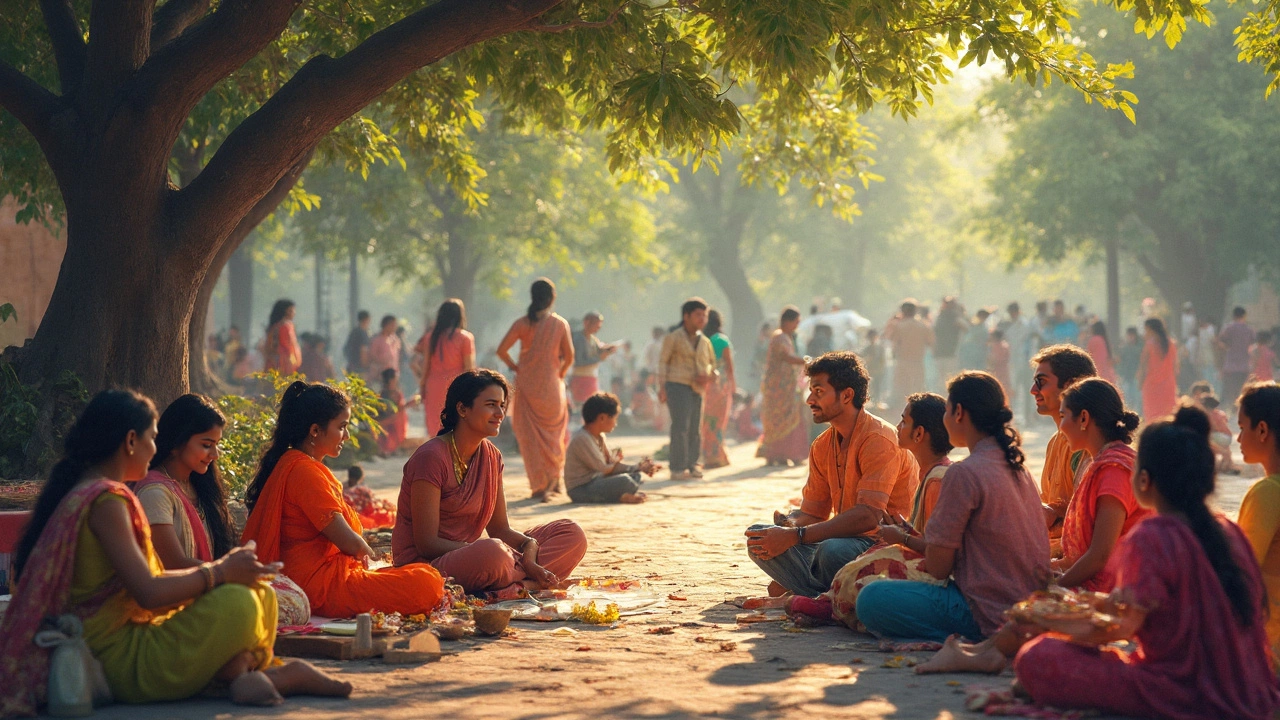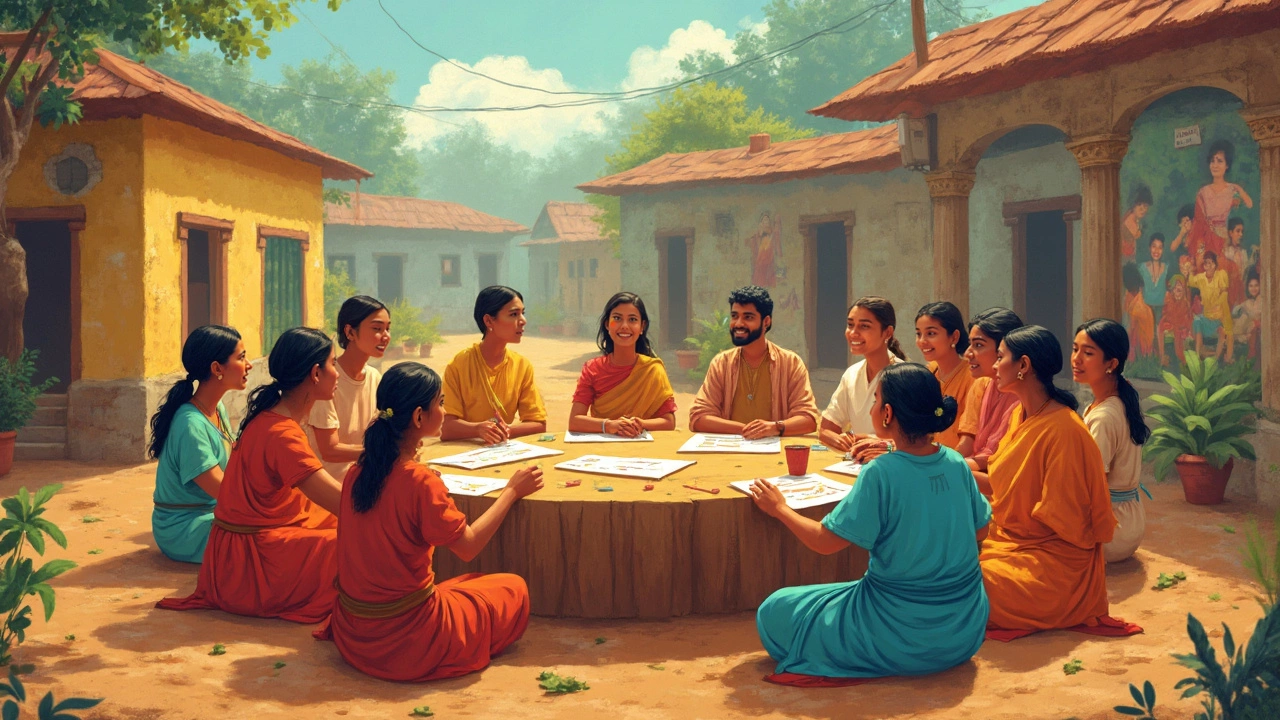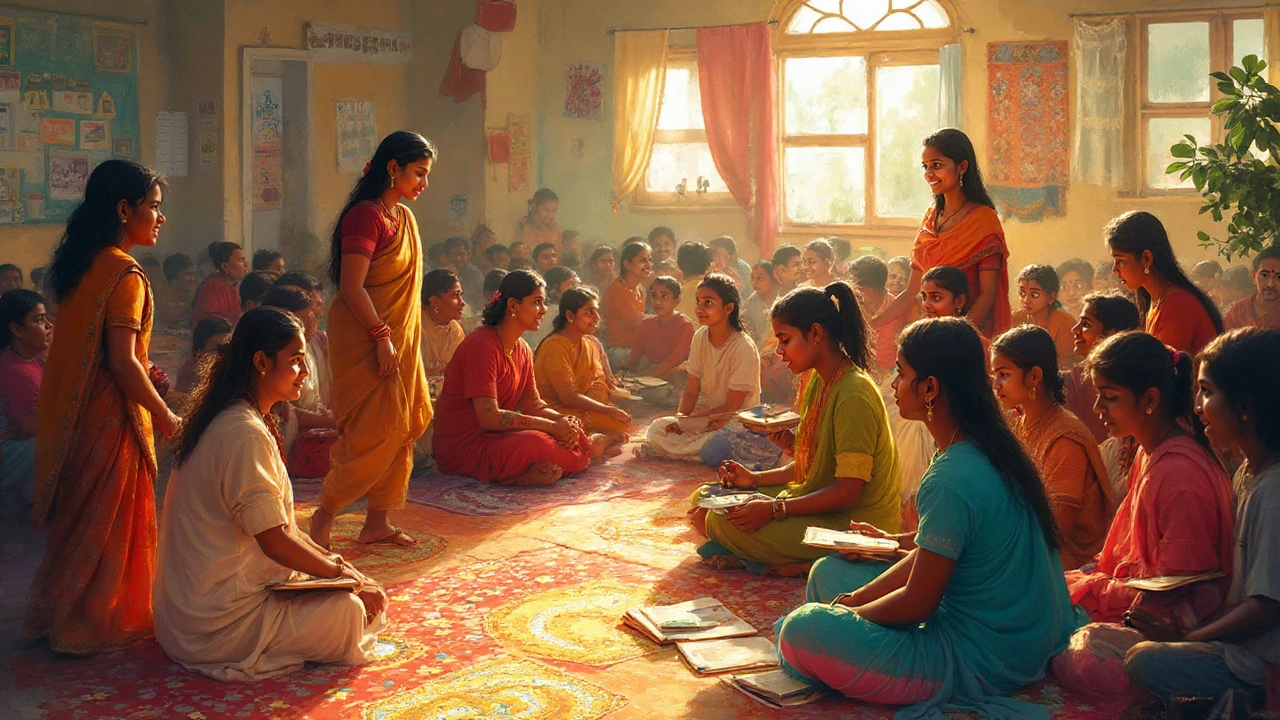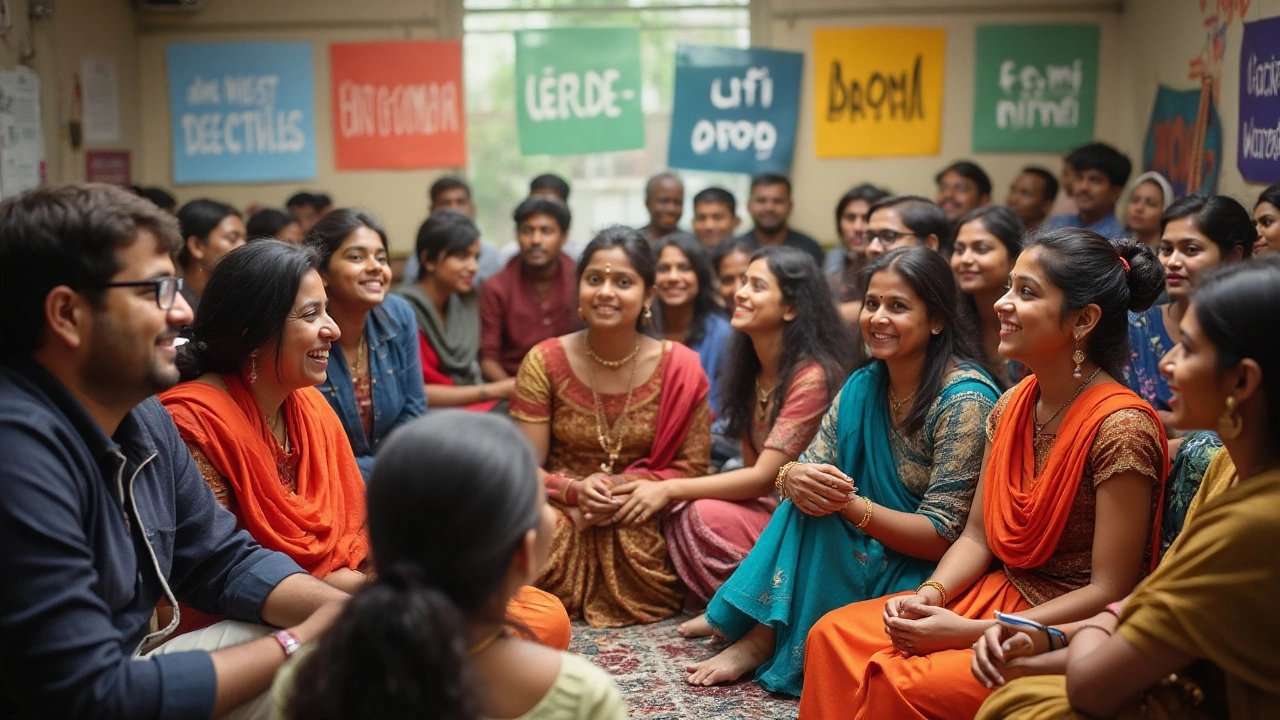Discover the most effective outreach tasks, creative activity ideas, and the secrets behind strong community engagement. Uncover practical tips and tools.

- Created by: Lydia Carmichael
- Completed on: 16 Mar 2025
- Categories: Community Support
Engaging with a community isn't just about showing up to events or sending out newsletters. It's deeper than that—it’s about understanding the core values that make real connections possible. So, if you're looking to truly engage and make a difference, what do you need to know?
First up, mutual respect. It's kind of like the golden rule we learned in kindergarten—treat others the way you want to be treated. In community engagement, this means listening with an open heart and acknowledging different perspectives. This builds trust, which is foundational if you want your community efforts to thrive.
Then there's inclusiveness. It's more than just inviting people to the table. It's about actively encouraging diverse voices and making sure everyone feels valued and heard. If you've ever felt left out, you know how crucial this one is. Authentic engagement happens when everyone, no matter their background, feels they belong.
Mutual Respect
At the heart of any strong community engagement is mutual respect. Think about it—nobody wants to be part of a community where their voice doesn’t matter. Mutual respect is really about listening, valuing each other's contributions, and creating a space where everyone feels safe to express their ideas.
So, how do we actually practice this in our community work? It starts with active listening. When people are speaking, truly hear them out without preparing your response in your head. It might sound simple, but in fast-paced environments, it can be a real challenge.
Why Mutual Respect Matters
Respect isn’t just a nice-to-have; it's crucial for trust-building. Without trust, community engagement efforts often fall flat. In fact, studies show that communities with higher levels of mutual respect report greater success in collaborative projects. In neighborhoods where respect was prioritized, participation increased by up to 20%.
Building Mutual Respect
- Encourage Open Dialogues: Create meetings where everyone is encouraged to speak.
- Recognize Contributions: A simple ‘thank you’ or acknowledging efforts can go a long way.
- Be Open-Minded: Different viewpoints can provide creative solutions.
By fostering mutual respect, your community engagement efforts can be more effective and rewarding. It’s all about making sure everyone feels valued and integral to the community's success. Remember, when respect is at the forefront, communities are more likely to work together toward common goals.
Inclusiveness
When we talk about inclusiveness in community engagement, it starts with asking, who's missing from the conversation? It's important to actively reach out to those often overlooked. Why? Because diverse perspectives can transform initiatives from good to great.
Think about it like this: different backgrounds bring fresh ideas and solutions you might not have considered. Harry Truman once said, "Whenever you have an efficient government you have a dictatorship." The same goes for communities—efficiency isn't always the goal, effectiveness is.
How to Be Inclusive
Being inclusive means creating spaces where everyone feels welcome. Here are some practical steps to help with that:
- Organize Accessible Meetings: Not everyone can meet during a typical 9-to-5. Consider hosting events at varied times or offering virtual options.
- Use Simple Language: Skip the jargon and keep communication clear and simple to ensure everyone understands.
- Recognize and Celebrate Diversity: Honor different cultural backgrounds and traditions in your activities.
- Feedback Channels: Make it easy for folks to share their thoughts with anonymous options if needed.
Inclusiveness in Action
Recently, a local community center planned a neighborhood festival. They didn't just pick activities they liked—they asked neighbors what they wanted. The result? A blend of traditional and modern entertainment that everyone enjoyed. It serves as a small but clear example of how inclusive planning can resonate with people.
Remember, inclusiveness isn't a checkbox—it's an ongoing commitment to connecting with every part of your community. When done right, it lays the groundwork for stronger, more effective community engagement.

Collaboration
Collaboration in community engagement goes beyond mere teamwork; it’s about building relationships where everyone's input is valued, creating a synergy that's greater than the sum of its parts. It’s crucial to find common ground, aiming for goals that benefit the whole community. But how do you make it happen effectively?
Sharing Responsibilities and Success
For successful collaboration, consider breaking down bigger goals into smaller, actionable tasks. This way, everyone has a role to play, and there's a shared sense of purpose. It’s like cooking a big family dinner; each person brings something different, but together, you create an incredible feast. When people see tangible results of their work, it builds momentum and enthusiasm.
Communication is Key
Open and honest communication plays a pivotal role. Frequent check-ins and updates ensure that everyone is on the same page and can manage their expectations. Regular communication helps in minimizing misunderstandings and addressing any issues promptly.
Leveraging Technology
Don’t shy away from using technology to facilitate collaboration. Tools like Slack, Trello, and Zoom can help keep the team connected no matter where they’re located. These platforms not only improve collaboration but also enhance efficiency by keeping everything organized in one place.
Learning from Others
Sometimes the best way to learn how to collaborate is by looking at successful examples. Did you know that the city of Denver, Colorado implemented a program where local businesses and community leaders worked together to tackle homelessness? Through their collective efforts, they've made significant progress and even created a model for other cities to follow.
In essence, collaboration in community outreach is about harnessing the power of various skills, experiences, and insights to drive meaningful change. It’s not always easy but when done right, the results are remarkable and rewarding.
Sustainability
Sustainability is such a buzzword these days, but what does it mean in terms of community engagement? It boils down to making sure your efforts aren't just impactful today but are built to last. So how do you achieve that?
One key approach is to integrate sustainable practices from the get-go. This isn't just about eco-friendly initiatives, though they're great. It involves recognizing resources—both human and financial—and using them wisely. For instance, a volunteer program that starts strong but fizzles out after a few months doesn't quite hit the mark of sustainability, right?
Building Long-Term Relationships
Long-term relationships are the bread and butter of any sustainable community engagement effort. Engaging community members more consistently leads to a deeper understanding of their needs and a stronger bond. This can mean regular check-ins or follow-ups that show you're committed for the long haul.
Also, consider the partnerships you're forming. A collaboration with local businesses or organizations can bring in fresh resources and enhance your reach. It's a win-win—businesses get to show their social responsibility, and you get more hands on deck.
Staying Relevant
Let's talk about staying relevant. Community needs can change over time, and sticking with a one-size-fits-all approach isn't going to work. Regularly assessing and adapting your strategies based on feedback keeps your work fresh and meaningful.
Imagine running a program that addresses food insecurity. If new data suggests that housing is becoming a bigger issue, pivoting to address this shift can keep your engagement effective and timely.
So, boil it down: It's about thinking long-term, planning smart, and being flexible. When all these pieces come together, you've got a recipe for sustainable community engagement that endures.
In the realm of community outreach, understanding and embracing the four core values of community engagement is essential. This article unpacks these values, offering a clear and practical guide to help you genuinely connect and collaborate with your community. By nurturing these values, you can foster meaningful relationships and create lasting impact. Whether you're new to community work or a seasoned pro, this guide provides valuable insights and practical tips.
Community engagement thrives on the concept of the 5 C's: Connection, Communication, Commitment, Collaboration, and Creativity. Understanding these elements can help organizations build meaningful relationships with their communities. The article explores practical ways to apply these principles through real-life examples and insider insights. Additionally, readers will find tips for ensuring their outreach strategies remain relevant and inclusive.

